With a bit of simple extra care, you can easily keep your hostas healthy and looking great long all summer long – even long after they finish blooming!
Hostas are one of the most popular perennial landscaping plants of all. Their thick, luscious, shade-loving leaves are perfect for filling flowerbeds with loads of color and interest. Especially when their tall, wispy, trumpet-shaped blooms shoot upward in full bloom.
But for many gardeners, once their hostas bloom, they quickly begin to go down hill. Not only do the stems and blooms begin to decay, but the foliage quickly deteriorates as well.
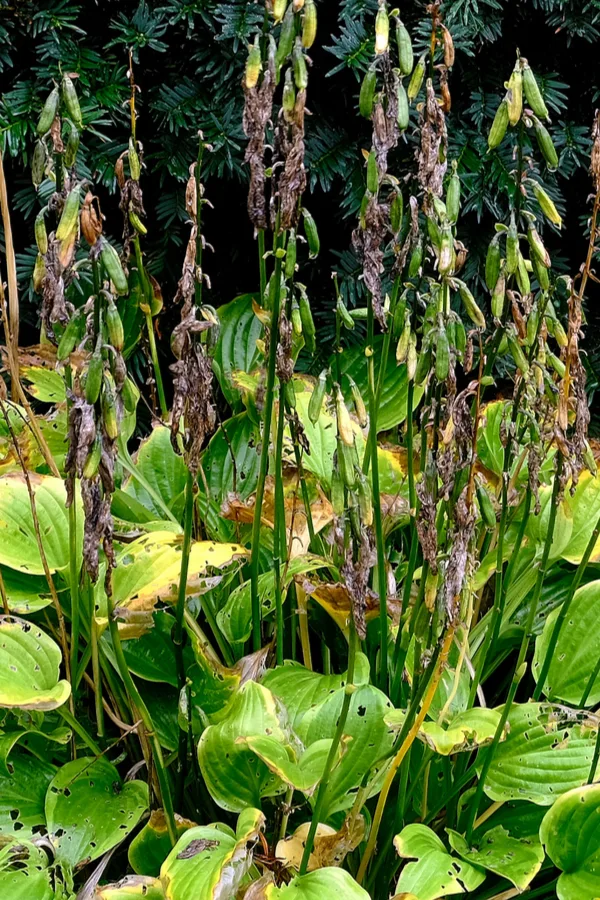
Unfortunately, what was once a majestic plant with huge, colorful leaves is now an ugly mound of tattered, yellowing foliage. And if that wasn’t enough, the insects and pests begin to take their toll too.
But fortunately, it doesn’t have to be that way at all. In fact, with just a few simple easy-to-perform summertime tasks, you can keep your hostas full of life, all through the dog days of summer and well into late fall!
How To Keep Hostas Healthy And Looking Great All Summer
#1 Fertilizing Hostas At The Right Time
Although not heavy feeders from the soil, hosta plants respond well to fertilizing. Especially when it is applied right at the time when they need it the most. For hostas, that means an early spring application, as well as a mid summer dose.
Spring Fertilizing
In the early spring, applying a slow-release fertilizer helps feed the roots and promote strong early foliage growth. And that early growth is important for forming strong, healthy bloom sets.
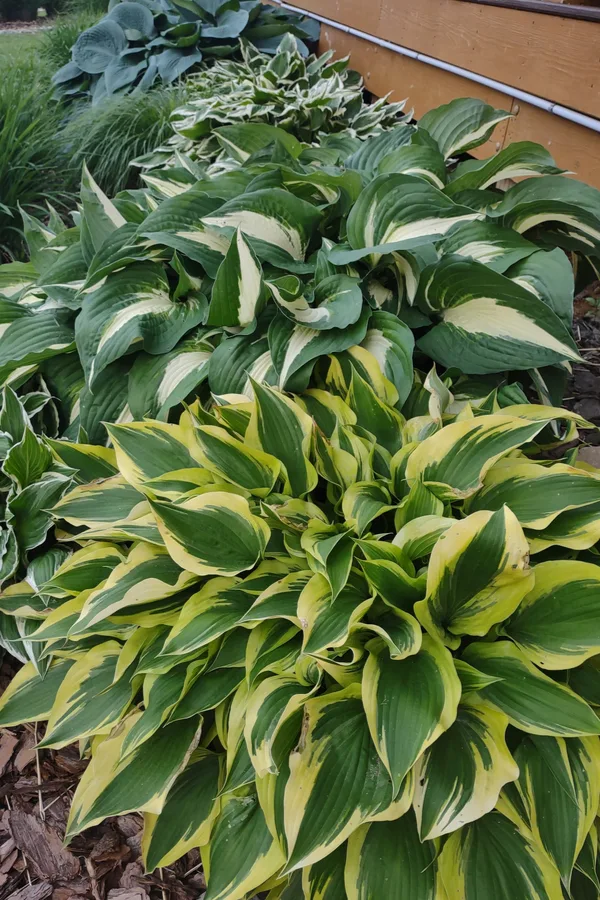
There are a couple of different methods that work well for spring fertilizing. Many gardeners simply cover their hostas in early spring with a few inches of fresh compost. The compost slowly releases its nutrients down into the soil and the roots below as the plant grows.
Just as effective is using a good quality slow-release (Espoma PT 18 Organic Fertilizer is our favorite choice) granular fertilizer. When applied at the plants base, it slowly releases nutrients to feed the plant.
Fertilizer can be applied anytime in the spring before hostas bloom. The earlier the better. If the plant has already come up through the ground, make sure any granular fertilizer is placed in the soil and not on the leaves where it can burn the plant.
Mid-Summer Fertilizing
Although the early spring feeding is important in developing strong blooms and foliage, it is a mid-summer fertilizing that will help hostas rejuvenate their foliage and stay healthy and vibrant into deep fall.
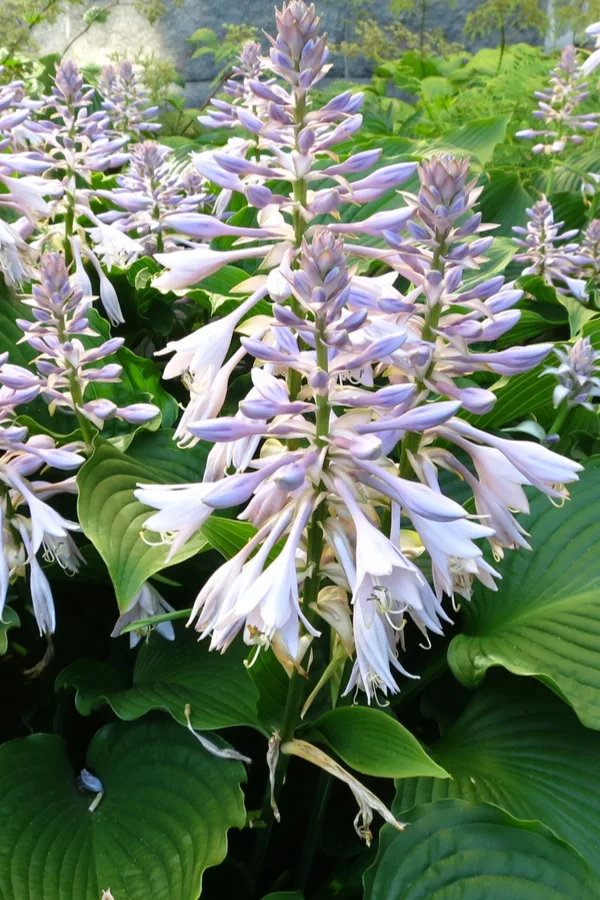
Hostas use up an enormous amount of energy in developing and producing their blooms. And as they complete their bloom cycle, they need to have that energy replaced to keep their foliage bright and strong.
As soon as your hosta’s blooms begin to show signs of fading, it is time to fertilize. As with spring fertilizing, there are a couple of options and methods that work well.
Although side dressing with compost will supply some nutrients, it is usually too slow of a process for mid-summer fertilizing. Instead, use either a granular or liquid all-purpose fertilizer to re-supply your plants a more rapid energy dose.

An application of compost tea right after the bloom set is a great way to provide instant power. Then, follow up with a slow release granular application to help plants continue to grow strong.
#2 Removing Bloom Spikes Early – How To Keep Hostas Healthy
One of the best and easiest ways to keep your hostas healthy and vibrant is by removing the spent bloom spikes as quickly as possible. T
The majority of hosta plants bloom in late spring to early summer. Although the process is beautiful, what you do immediately after their bloom period makes a huge difference in the plant’s vitality and appearance the remainder of the growing season.
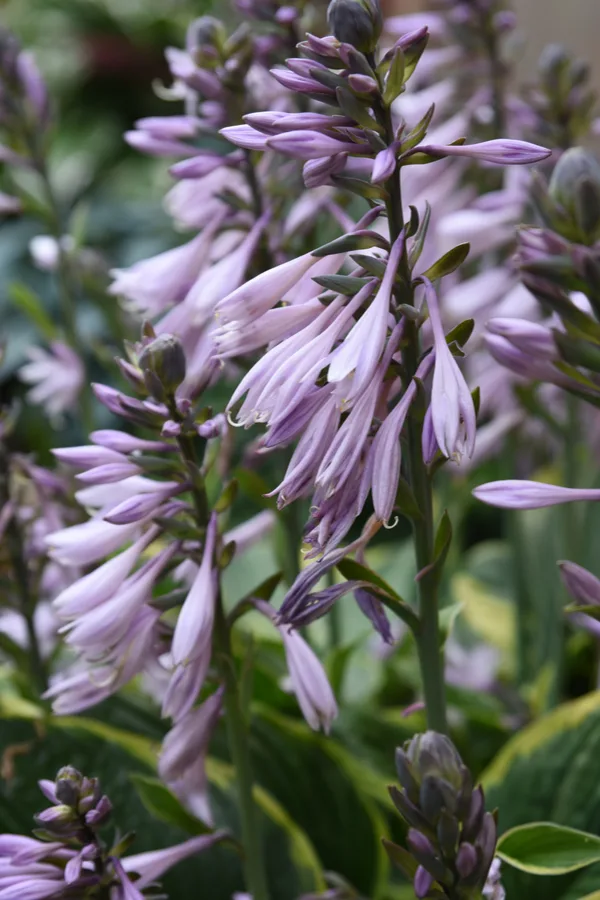
As soon as hosta plants have completed their flowering process, cut the bloom stems back to the base of the plant. Why? The plant uses a tremendous amount of energy to both bloom and attempt to maintain dying blooms.
But by removing stems after they flower, the plant’s resources are then concentrated back to only growing and maintaining great foliage.
In fact, many gardeners who prefer only the hosta’s massive and beautiful leaf structure never allow plants to bloom at all. Instead, they remove bloom stems as they appear. This way, plants can use all of their energy to produce and maintain massive leaf canopies, and not flowers.
But if you do enjoy the plant’s blooms, just be sure to cut them back as soon as the near the end of their bloom cycle. It will help the foliage of your plants the rest of the summer and fall tremendously!
Be On The Lookout For Pests – How To Keep Hostas Healthy
Summertime can be a tough time for hosta plants when it comes to pests. And they love to attack plants when they are weak. For hostas, that means right after they bloom.
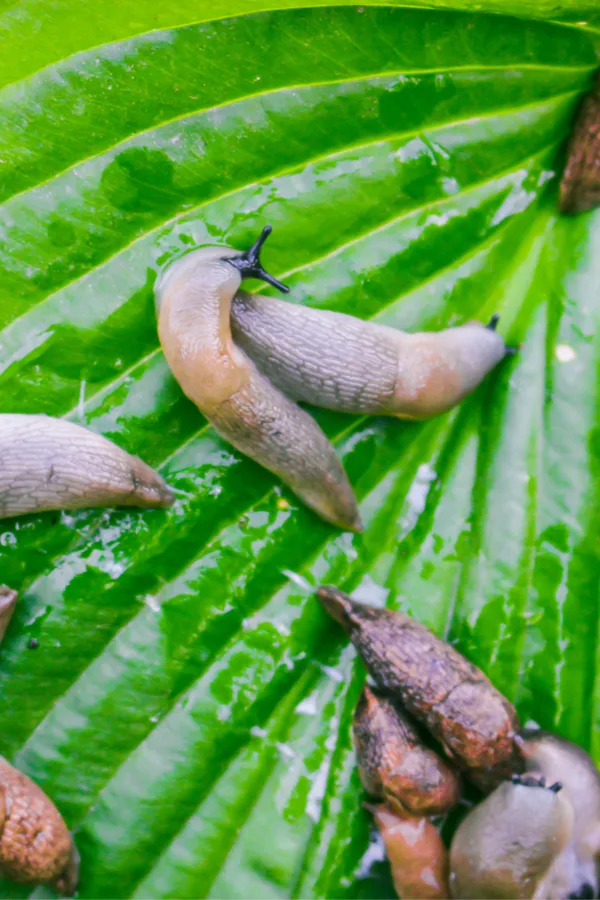
Slugs, aphids, beetles and a whole host of other plant-eating insects love to feed on the leaves of hostas. And their damage can be quick and swift!
It is important during the summer months to keep an eye out for early signs of damage. Aphids can usually be controlled simply by spraying plants with a steady stream of water.
Slugs and other pests can be a bit more tricky, but early detection is the key! See : How To Control Slugs
When All Else Fails – A Way To Keep Hostas Healthy & Beautiful For A Second Time
Sometimes, in the middle of summer, whether it is from extreme heat, too little or too much rain, or a sneak attack from pests – a hosta plant’s foliage gets beyond the point of repair.
But there is no need to keep the unsightly plant in full view. And even better, there is a way to fix it to have beautiful foliage in just a few weeks!
If a hosta plant’s foliage has reached the point of no return, you can always push the re-set button. By simply cutting all of the foliage back to the ground, you will force the plant to grow new foliage from the base.
And don’t worry, it won’t kill the plant! Within a few weeks after cutting back, you will see the new starts begin to emerge. And before you know it, you will have a fully-leafed hosta plant once again.
Here is to keeping your hostas healthy and beautiful all summer and fall long!
This Is My Garden is a website dedicated to spreading the love and knowledge of gardening around the world. We publish two new garden articles each week. This article may contain affiliate links.
